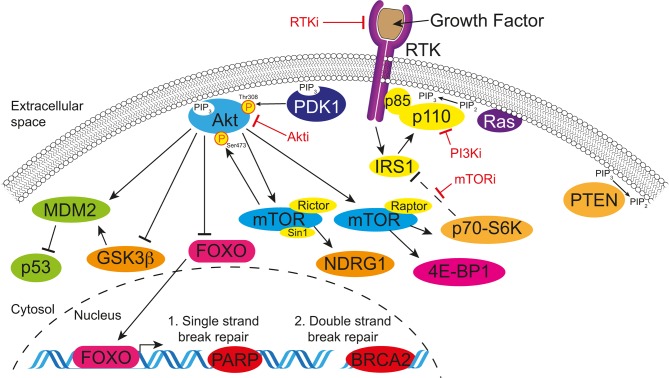Figure 3.
Simplified schematic of the PI3K pathway, which highlights the common targets for small molecule inhibitors. Briefly, signalling from growth factors activates RTKs and recruits PI3K and other scaffold proteins to the cell membrane, where PIP2 is converted to PIP3. This recruits phosphoinositide-dependent kinase-1 (PDK1) and Akt to the membrane and leads to downstream signalling through the kinase activities of Akt. (1) Single-strand break repair is regulated primarily by PARP and inhibition of PARP can lead to genomic instability. (2) Double-stranded break repair is primarily regulated by a complex with BRCA2, which is lost in familial pancreatic cancer and some PDAC cases and can lead to genomic instability. Genomically unstable tumours require the PI3K pathway to maintain survival pathways and PI3K pathway inhibition may be an emerging option for patients with BRCA2 mutations or in combination with PARP inhibitors. More exhaustive pathway maps can be found in refs 61 80. P13K, phosphoinositide 3-kinase; RTKs, receptor tyrosine kinases.

